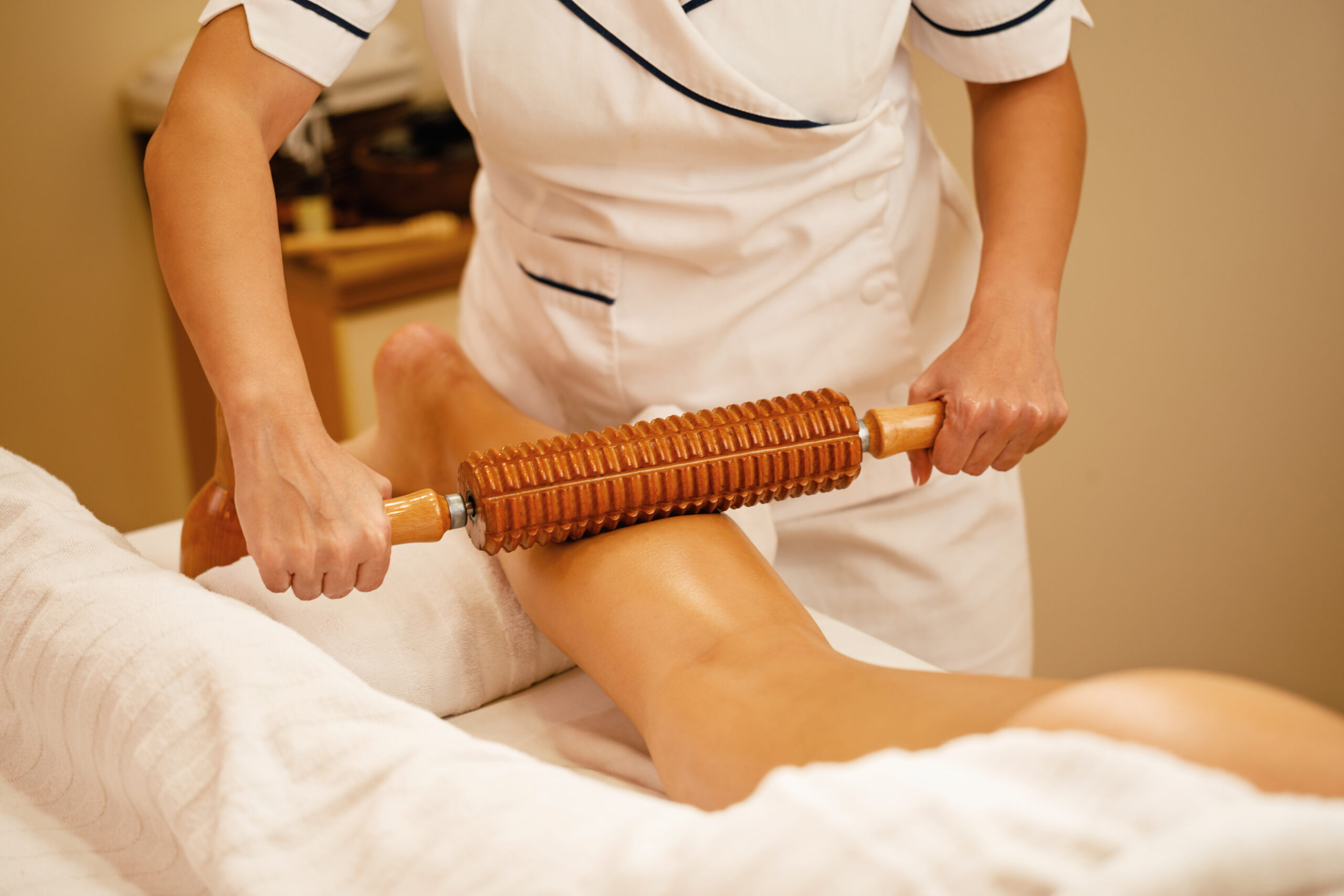Right now, wood therapy is having a moment.
This treatment, also known as “maderoterapia,” has gained popularity on social media, with influencers and celebrities praising its ability to sculpt and contour the body while reducing cellulite and fat. But does wood therapy really live up to the hype, or is it just another wellness fad with temporary effects?
Wood therapy is the practice of using specially crafted wooden tools to apply targeted pressure to areas of the body. By massaging the skin and underlying tissues, it claims to stimulate lymphatic drainage, improve circulation, break down fat deposits, and smooth out the appearance of cellulite. But before you book your first session, it’s worth exploring whether the results are truly long-lasting or if other options are more effective for achieving your body goals.
Wood Therapy Benefits
According to board-certified plastic surgeon Dr. Meegan Gruber, wood therapy promotes itself as a natural, non-invasive alternative to more intense body contouring treatments.
“Wood therapy, or ‘maderoterapia,’ is an alternative body sculpting treatment that uses specially designed wooden tools to massage the body,” she explains. “By applying pressure, this treatment stimulates lymphatic drainage, breaks down fat cells, and reduces the appearance of cellulite. It is promoted as a non-surgical method for body contouring and improving skin smoothness.”
On the surface, this sounds like an ideal solution for anyone looking to tighten up without undergoing surgery or more invasive procedures. However, Dr. Gruber cautions that the reality is more complex when it comes to fat reduction.
“While you may notice temporary improvements in your skin’s appearance, such as reduced puffiness or smoother areas due to the massage and improved circulation, it doesn’t precisely melt fat away,” she noted. “Cellulite is particularly challenging because it involves fat and fibrous connective tissue, which aren’t easily affected by external pressure.”
What Does Science Say?
The science behind wood therapy isn’t as promising as some of the testimonials may suggest.
“There isn’t strong scientific evidence that wood therapy permanently reduces cellulite or fat deposits,” Dr. Gruber stated. “The visible effects people experience are likely due to temporary improvements in circulation or lymphatic fluid movement.”
In other words, wood therapy results are often short-lived. That may explain why clients may need to keep coming back for additional sessions to maintain their results. While it may make the skin look smoother for a short period, Dr. Gruber emphasized that it doesn’t directly reduce fat or provide permanent results. For individuals seeking more permanent solutions, procedures like liposuction or non-invasive technologies such as radiofrequency or laser treatments are far more effective.
“These treatments deliver energy beneath the skin to target fat cells, tighten skin, or stimulate collagen production,” Dr. Gruber explained. “All of them are backed by solid clinical research.”
Comparing Wood Therapy to Modern Alternatives
Compared to newer body contouring methods, wood therapy is more of a surface-level treatment. Non-invasive treatments like radiofrequency (RF) and laser therapies use advanced technologies to target fat and tighten skin from within. Wood therapy, on the other hand, works only on the outer layers of skin.
“Wood therapy is much less advanced in technology than non-invasive treatments like radiofrequency or laser therapies,” Dr. Gruber pointed out. “RF and laser treatments are highly effective because they directly target fat and tissues using heat or energy.”
Still, wood therapy could play a valuable role in your overall wellness routine. That’s especially the case if you’re looking for a relaxing, non-committal way to indulge in self-care.
“Enjoying wood therapy could still be a valuable part of your self-care routine,” Dr. Gruber added. “But for long-term, visible results, surgery and liposuction offer the most predictable outcomes.”
Are There Risks?
Although wood therapy is generally considered safe, there are some risks, especially for women of color. Dr. Gruber stresses the importance of being mindful of your skin type and how it reacts to treatments.
“The treatment involves applying firm pressure with wooden tools, which can sometimes cause bruising or irritation, especially for sensitive skin,” she said. “This is particularly important for women of color, as darker skin tones may be more susceptible to hyperpigmentation if the skin experiences trauma.”
It’s crucial for those with sensitive skin or conditions like keloids to consult with a practitioner experienced in working with diverse skin tones. Doing so can help minimize potential complications. Individuals with certain medical conditions should proceed with caution. Those conditions include varicose veins, blood clotting disorders, or skin conditions like eczema or psoriasis.
Is Wood Therapy Worth It?
Ultimately, whether wood therapy is worth trying depends on your personal goals. If you’re seeking a luxurious, relaxing experience that may provide temporary improvements in your skin’s appearance, wood therapy could be a fun addition to your beauty routine.
“I wouldn’t dismiss wood therapy if you enjoy it and it makes you feel good,” Dr. Gruber said. “It can be relaxing, and the sense of self-care it offers is valuable!”
However, if you’re serious about achieving noticeable, long-term results in body contouring or cellulite reduction, exploring alternatives that are backed by science may be better.
“There are more effective alternatives if you aim for long-term, visible results like reducing cellulite or fat,” Dr. Gruber said.
Whether it’s surgery, non-invasive RF, or a balanced approach of diet, exercise, and medical-grade skincare, there are many proven options to explore.
